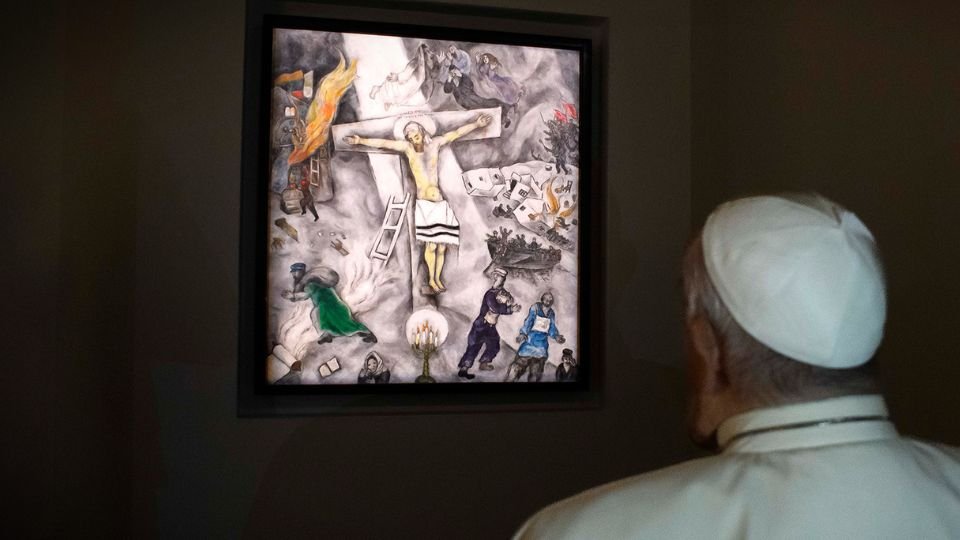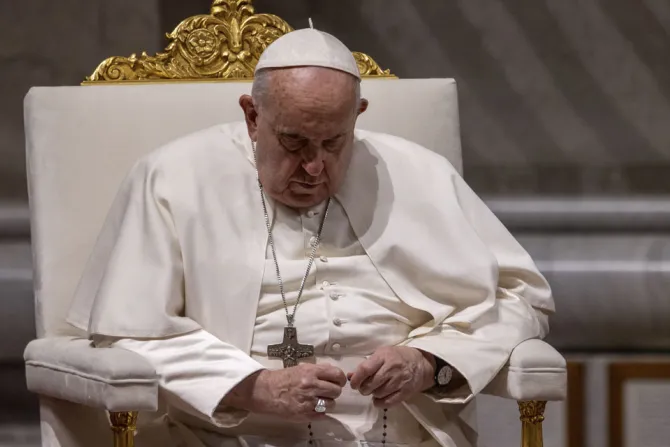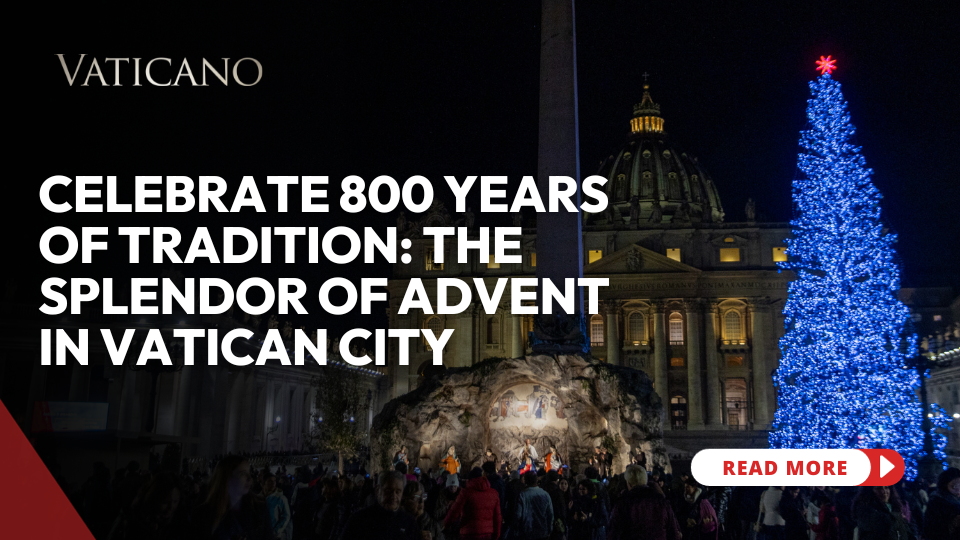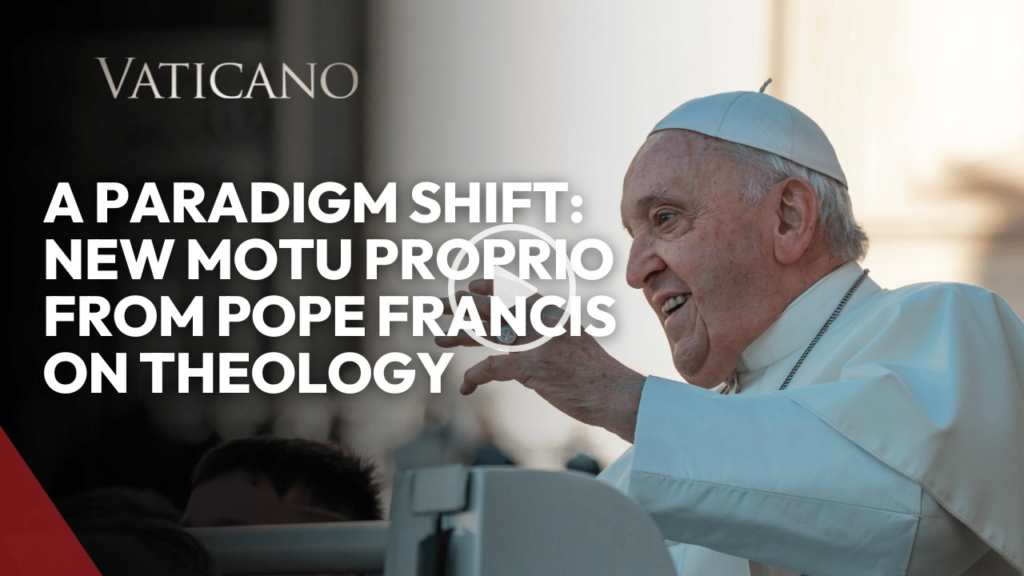For the first time, Pope Francis’s beloved masterpiece, Marc Chagall’s iconic White Crucifixion is on display in Rome as part of the Holy Year’s “Jubilee is Culture” initiative.
“Like all the exhibitions we’ve brought to Rome for this Jubilee, this one is meant to be a symbol of hope and peace—a bridge for dialogue between nations,” explained Davide Vincent Mambriani, Curator of the “Jubilee is Culture” Exhibition.
Chagall painted the “White Crucifixion” in response to Kristallnacht, the Nazi-led attacks on Jewish communities. At its heart, Jesus hangs on the Cross—a powerful image blending Christian and Jewish identities. Surrounding Him are scenes of destruction: burning synagogues, fleeing refugees, and sacred texts in flames.
Elizabeth Lev, Author & Art Historian, explained, “Chagall is expressing this tremendous grief, even though he’s living in Paris. But he’s expressing this tremendous grief for the Jewish communities all over Germany.“
He produces this extraordinary cry of sadness, of mourning in the work of the White Crucifixion.
As a Russian-born Jew, Chagall portrays Christ in traditional Jewish garments—a striking reminder of shared suffering. Yet, in the shadows of devastation, Chagall offers a glimmer of hope.
Lev notes, “You have this figure of Christ crucified in the centre, and then all around it… there’s like a solar system of movement—figures orbiting the Cross yet always drawing our attention back to it. The lower part of the painting is shadowed, but the upper part is lighter, guiding us toward a sense of hope—that not all is lost. At the top left of the canvas, light breaks through the gray. A group in a boat lowers an anchor—a timeless symbol of hope.”
Mambriani added, “The Holy Father paused here for a few moments, quietly blending in with the crowd. To everyone’s surprise, as he left, he reflected on how the profound meanings within this work—so much suffering encircling the symbol of Peace that is Christ—offer a powerful invitation to reflect, contemplate, and pray before this masterpiece.”
Adapted by Jacob Stein







